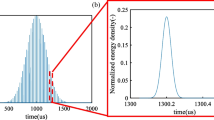Abstract
When indented or scratched, ceramics and glasses often exhibit distinct transition(s) in behavior as a function of the load on the abrasive or depth of its penetration. This behavior has important practical consequences in both material fabrication and wear. For example, so-called ductile mode grinding is dependent on reducing the depth of cut below a critical value so that a relatively damage free and smooth surface is produced. Transitions in behavior have been extensively studied using indentation and scratching on polished surfaces. However, in most practical wear, grinding, and polishing applications, scratching actually occurs on surfaces with existing damage.
In this study the behavior of three different optical glasses during repeated low-load scratching with a Berkovich diamond indenter is reported. A distinct transition point, corresponding to a change from ductile grooving to chipping along the scratch track, was observed as a function of the number of repeated passes (scratches). The critical number of passes was dependent on both the applied load and the material. Several different methods for identifying the transition point were studied and found to give consistent results.
Similar content being viewed by others
References
T. G. BIFANO, T. A. DOW and R. O. SCATTERGOOD, J. of Eng. for Ind. 113 (1991) 184–189
RAJAT BANERJEE and BIJIT KUMAR SARKAR, J. Amer. Ceram. Soc. 80 (1997) 2722.
Idem., Bull. Mater. Sci. 19 (1996) 759.
Idem., Glastech. Ber. Glass Sci. Technol. 68 (1995) 177–180.
A. J. SPARKS and I. M. HUTCHINGS, J. Mater Sci. Let. 11 (1992) 918.
MING LI and MICHAEL J. REECE, J. Amer. Ceram. Soc. 83 (2000) 967.
F. GUIU, M. J. REECE and D. A. J. VAUGHAN, J. Mater. Sci. 26 (1991) 3275.
MICHAEL REECE and FRANK GUIU, J. Amer. Ceram. Soc. 73 (1990) 1004.
T. W. WU, A. L. SHULL and R. BERRICHE, Surf. Coat. Tech. 47 (1991) 696.
EIJU TAKAKURA and SUSUMU HORIBE, Mater. Trans. JIM 32 (1991) 495.
A. K. MUKHOPADHAY, Bull. Mater. Sci. 24 (2001) 105.
Idem., J. Mater. Sci. Let. 18 (1999) 333.
SANTI MAENSIRI and STEVE G. ROBERTS, J. Amer. Ceram. Soc. 85 (2002) 1971.
M. MATSUZAWA, N. YAJIMA and S. HORIBE, J. Mater. Sci. 34 (1999) 5199.
T. R. GOVINDAN KUTTY, ibid. 25 (1990) 455.
K. LI, Y. SHAPIRO and J. C. M. LI, Acta Mater. 46 (1998) 5569.
Y. N. LIANG, S. Z. LI, D. F. LI and S. LI, Wear 199 (1996) 66.
V. JARDRET, H. ZAHOUANI, J. L. LOUBET and T. G. MATHIA, ibid. 218 (1998) 8.
K. E. PUTTICK, M. R. RUDMAN, K. J. SMITH, A. FRANKS and K. LINDSEY, Proc. R. Soc. Lond. A 426 (1989) 19.
M. V. SWAIN, ibid. A 366 (1979) 575.
S. Y. CHEN, T. N. FARRIS and B. CHANDRASEKAR, Tribology Trans. 34 (1991) 161.
A. BROESE VAN GROENOU, N. MAAN and J. D. B. VELDKAMP, “Single-point scratches as a basis for understanding grinding and lapping, in The Science of Ceramic Machining and Surface,” Vol. 2 (1977) p. 43.
M. G. GEE, A. GANT and L. VAN DEN BERG, “Scratch testing and fine scale abrasion testing of hard metals and ceramics,” NPL Report CMMT, 175(A) (1999).
M. G. GEE, Wear 250 (2001) 264.
S. J. BULL and D. S. RICKERBY, Thin Solid Films 181 (1989) 545.
S. BENNETT, A. MATTHEWS, A. J. PERRY, J. VALLI, S. J. BULL and W. D. SPROULL, Tribologia 13 (1994) 16–28.
Y. XIE and H. M. HAWTHORNE, Wear 225–229 (1999) 90.
HOCKIN H. K. XU and S. JAHANMIR, J. Mater. Sci. 30 (1995) 2235.
HOCKIN H. K. XU and SAID JAHANMIR, Wear 192 (1996) 228.
JAMES SCHULMAN, TONG FANG and JOHN LAMBROPOULOS, “Brittleness/Ductility Databases for Optical Glasses,” Center for Optics Manufacturing, Rochester, NY (1996).
TOSHIO TAKAHASHI and PAUL D. FUNKENBUSCH, Mater. Sci. Eng. A 285 (2000) 69.
TOSHIO TAKAHASHI, PAUL D. FUNKENBUSCH and JEFF RUCKMAN, Proceedings of the SPIE 3782 (1999) 22.
A. ARORA, D. B. MARSHALL, and B. R. LAWN, J. Non-crystall. Solids 31 (1979) 415.
Author information
Authors and Affiliations
Rights and permissions
About this article
Cite this article
Thonggoom, R., Funkenbusch, P.D. Transition in material removal behavior during repeated scratching of optical glasses. J Mater Sci 40, 4279–4286 (2005). https://doi.org/10.1007/s10853-005-2839-1
Issue Date:
DOI: https://doi.org/10.1007/s10853-005-2839-1



